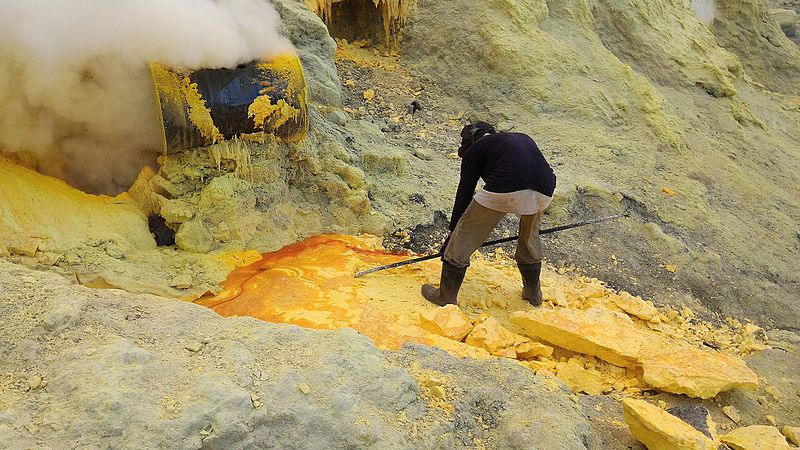
# The Significance of Mining Feasibility Studies: Paving the Way for Project Success
Prior to initiating a mining project, firms need to perform a comprehensive **mining feasibility study** to evaluate the economic, technical, and environmental feasibility of the undertaking. An effectively conducted feasibility study is crucial for making educated choices, obtaining funding, and guaranteeing that a project is strategically positioned for success.
By analyzing essential elements such as resource quality, costs, risks, and compliance with regulations, a mining feasibility study provides a detailed framework that aids each phase of the mining process—from initial exploration to full-fledged production.
## What Constitutes a Mining Feasibility Study?
A **mining feasibility study** is a thorough evaluation that determines whether a mining venture is financially feasible, technically practical, and environmentally responsible. It addresses all facets of a mining project, ranging from resource estimation to infrastructure requirements, operational planning, and adherence to regulations. Usually carried out before significant capital investment, the feasibility study offers a dependable overview of the project’s potential and associated risks, assisting stakeholders in making evidence-based choices.
## Essential Elements of a Mining Feasibility Study
Mining feasibility studies are intricate and varied. Each element is crucial in assessing the project’s overall viability. Below are the primary elements typically present in a mining feasibility study:
### 1. **Resource Estimation and Geological Evaluation**
Grasping the quality and quantity of the mineral resource is the foundation of any feasibility study.
– **Resource Quality and Quantity**: A comprehensive analysis of the mineral deposit, informed by drilling data, laboratory analysis, and geological surveys, is essential. This evaluation estimates the scale, grade, and distribution of the resources.
– **Geological Risk Evaluation**: Recognizing geological risks like fault lines, unstable terrain, or difficult rock conditions is crucial for predicting challenges in resource extraction.
### 2. **Economic and Financial Assessment**
A meticulous economic evaluation is required to determine if the project can meet its financial goals.
– **Cost Analysis**: Detailed assessments of both **capital expenditure (CAPEX)** and **operational expenditure (OPEX)** are necessary. This includes costs related to infrastructure, equipment, labor, transport, and ongoing maintenance.
– **Revenue Projections**: Predicting future income from the sale of mineral outputs based on resource size and market prices is vital for understanding the project’s financial yield.
– **Investment Evaluation**: Financial indicators such as **Net Present Value (NPV)** and **Internal Rate of Return (IRR)** are employed to assess whether the project meets the company’s investment criteria.
### 3. **Environmental and Social Impact Evaluation**
Recognizing the environmental and societal effects of the project is a key component for obtaining regulatory approval.
– **Environmental Adherence**: Feasibility studies investigate the mining activities’ effects on the environment, addressing issues like water consumption, waste management, and emissions. Compliance with environmental laws is fundamental for sustainable success.
– **Community Effects**: Evaluating how the project will impact local populations is critical, particularly for mining operations that could lead to displacement or significant alterations in land use. Proactive community engagement and social responsibility initiatives can help build positive relations.
### 4. **Technical and Engineering Assessment**
An essential section that details the practical aspects of the mining operation.
– **Mine Design and Configuration**: This analysis provides insights into how the mine will be structured, including extraction methods, equipment requirements, and infrastructure placement to maximize operational efficiency.
– **Safety and Risk Evaluation**: Feasibility studies also review potential risks such as hazardous equipment or unsafe geological situations. Establishing proper safety protocols in advance safeguards worker safety and reduces operational risks.
### 5. **Permitting and Regulatory Adherence**
Ensuring compliance with legal and regulatory standards is a critical facet of a feasibility study.
– **Permitting Requirements**: Mining projects must adhere to numerous local, national, and occasionally international regulations. Identifying necessary permits and licenses early on is vital for preventing legal and operational setbacks.
– **Long-Term Compliance Plan**: Ongoing adherence to environmental, labor, and operational regulations throughout the project’s duration is essential for sustaining public approval, legal operation, and financial viability.
## The Phases of a Mining Feasibility Study
Mining feasibility studies generally progress through several stages—each providing greater levels of detail. Here’s a summary of these vital stages:
### 1. **Preliminary Economic Assessment (PEA)**
The **Preliminary Economic Assessment (PEA)** gives an initial perspective on the project’s viability. It includes rough estimates of resource quantities, initial cost projections, and a basic mine strategy. The PEA aids companies in deciding whether to progress to more intricate studies.
### 2. **Pre-Feasibility Study (PFS)**
The **Pre-Feasibility Study (PFS)** expands on the PEA and delivers a more in-depth analysis of technical and financial considerations.